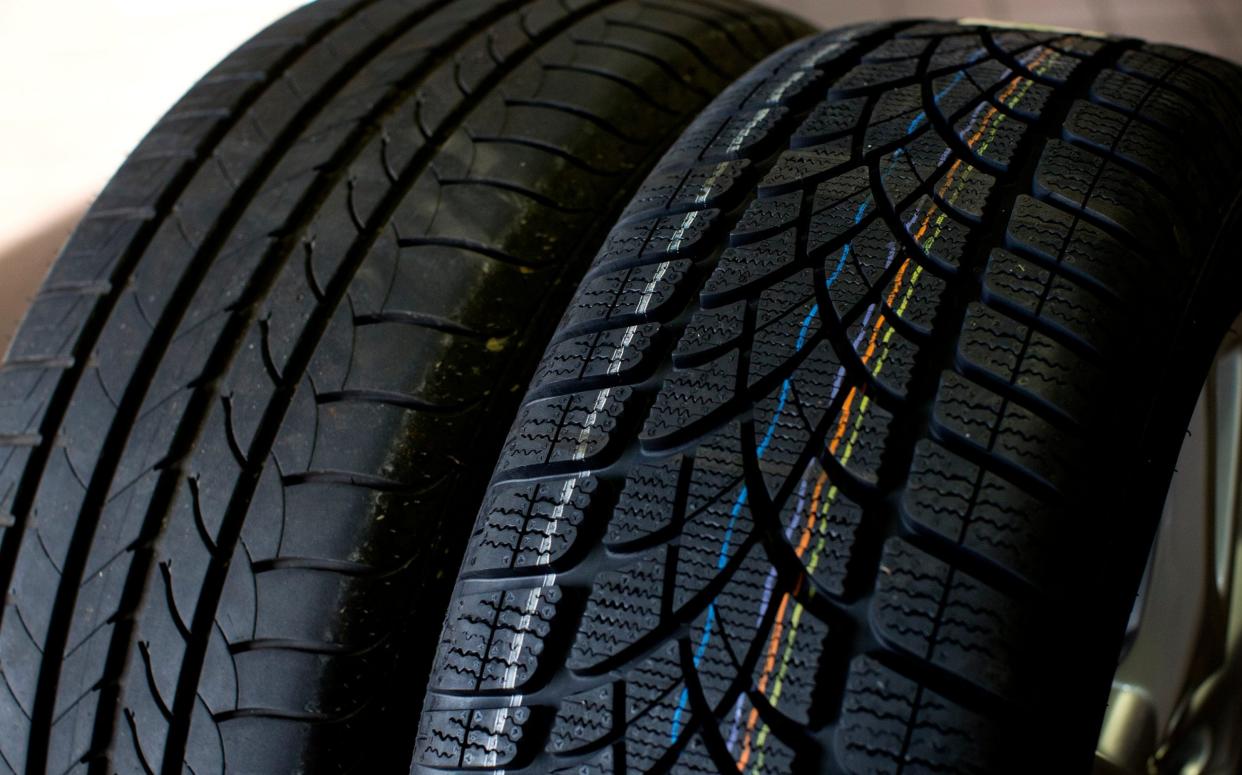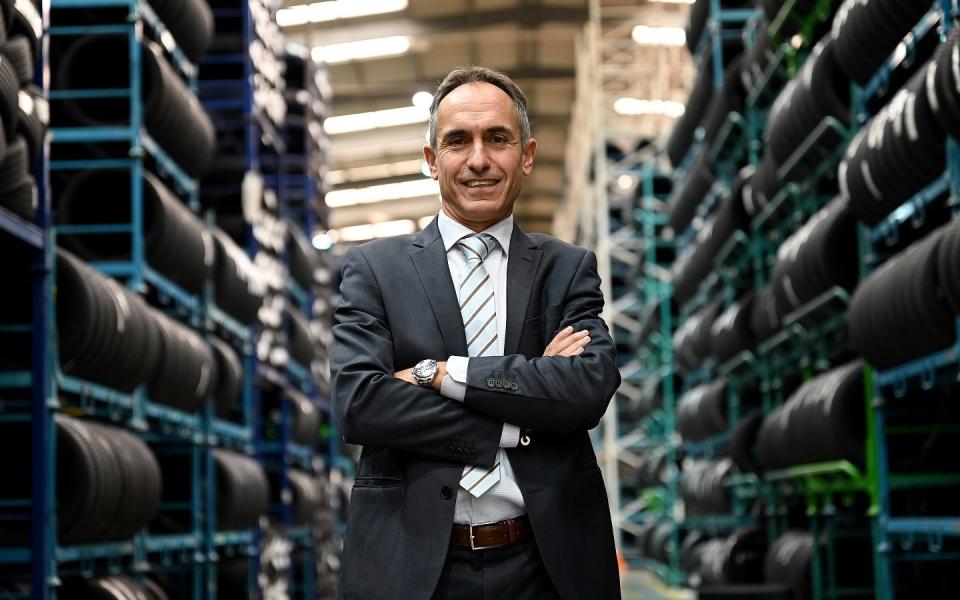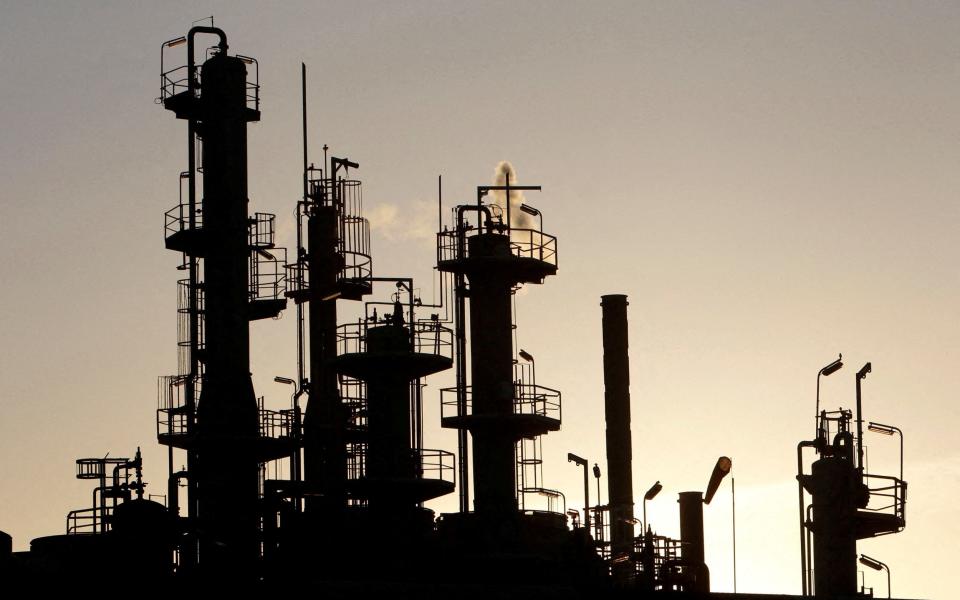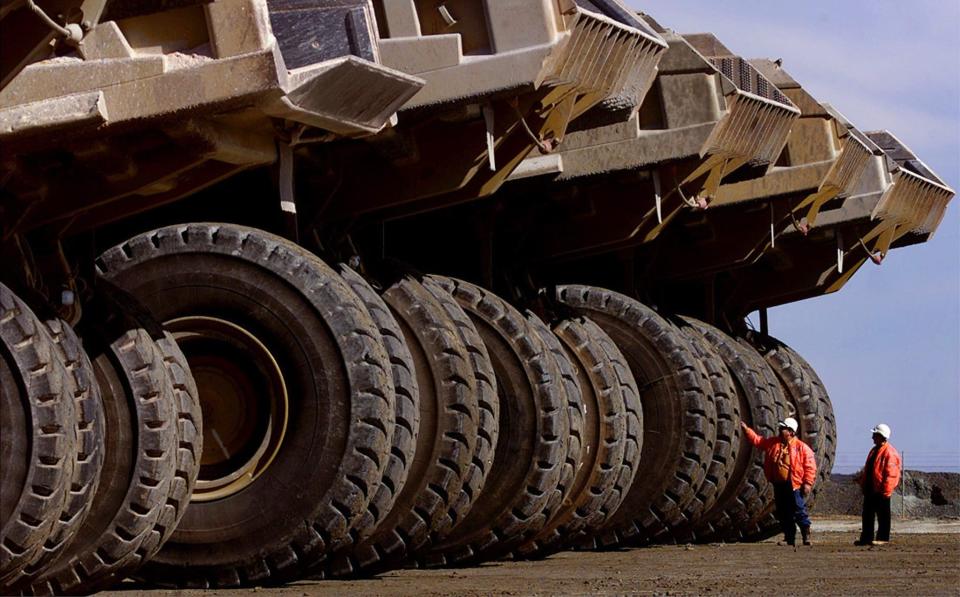Tyre pollution’s unseen impact – and what we can do about it

A real-world driving study of a typical family petrol car carried out last year showed it produced particulates from its tyres and brakes (termed non-exhaust emission, or NEE) in volumes 1,000 times more than from the engine.
Yet this year we are expecting new EU7 emissions legislation for internal combustion engines which, if rumours are to be believed, contain some of the most Draconian standards ever required. These could include real-time, life-long, mass surveillance of car emissions, up to four exhaust catalysts of such expense and complexity they will make small cars almost impossible to market at prices people can afford, and forcing hybrids into electric-only mode in predetermined geofenced areas whatever the battery’s state of charge.
How did tyre manufacturers get off so lightly?
“It [the environment] is clearly a very delicate topic,” says Andrea Manenti, managing director of Bridgestone in the UK and Ireland, “and something that, as Bridgestone, we are incredibly sensitive about.”

In response, Manenti offers up Bridgestone’s work with the Tyre Industry Project (TIP), a talking shop of the world’s 10 leading tyre companies representing about 65 per cent of the world’s tyremaking capacity, which is led by the World Council for Sustainable Business.
Problem particulates
To be fair, the TIP has supported a number of peer-reviewed studies into the impact of the tyre industry, most notably the fate of the squillions of elongated 100-micron-long, rubber-and-road particulates that gather as dust at road edges and are washed into the surrounding environment.
While the issue is huge, there are a couple of reasons for cautious optimism. First is that the particulates appear to be heavier than water, so they sink to the bottom where in some cases they can be recovered.
And also, as Manenti points out, “there are some studies where, thankfully, it looks like no more than two to five per cent of these particulates is actually airborne. Again, this study had been conducted within this Tyre Industry Project, but of course, we continue to carry on studying…”
What this means is that while there is an issue with inhalation of the particulates, from the early studies it looks as though it isn’t quite the problem for our lungs that it could potentially be.
Tyre dumps and raw materials
But as long as we use rubber-based tyres on our cars and trucks (though it’s worth noting that recycled tyres are used as fillers in road surfaces materials which have been trialled on the M1 motorway), tyres are going to be a wearing component, or “consumable” as the industry puts it, and that inevitably has environmental implications.
A modern car tyre requires about 26.5 litres of oil to make (a truck tyre requires about 83 litres), but both emit 80 per cent of their lifetime CO2 in use. And throughout the world in one year, an estimated one billion tyres reach the end of their useful life. Whether it’s making them, using them or disposing of them, tyres are an environmental issue.
At least we don’t bury tyres any more; the EU banned the landfill dumping of tyres in 2002 and of tyre parts in 2006. Hopefully that marks an end to environmental disasters like the inferno at the dump of 10 million tyres at Heyope near Knighton in Wales in 1989. When this massive dump caught fire (arson was suspected) it proved so difficult to extinguish, it smouldered on for another 15 years.

Yet landfill still goes on in other parts of the world and as well as being a fire risk and a terrible environmental hazard, it’s also a massive waste. The metals, petrochemical residue and other elements in the tyre have value in their own right; why would we throw them away?
The positives of retreaded tyres
One traditional way of reducing the economic and environmental impact of a tyre is to extend the life of the carcass by retreading or remoulding the tyre. Widely used in the truck industry, retreads can save vehicle operators up to three times less resource and four times fewer tyres than single-life tyres. So why aren’t they used more widely in the passenger car sector?
“It’s an interesting question,” says Manenti, “and it’s definitely coming up more. The remould certainly has gone through very different phases [but] at this stage we certainly would like to relaunch and push remoulds in the commercial side of the business.”
The market for remoulded truck tyres has recently seen a boost as the EU has banned the dumping of cheap Chinese new passenger car and commercial tyres on the continent. Partly as a result, Bridgestone has recently invested in remould facilities in Béthune in France and its Bulldog plant in Bourne, Lincolnshire.
“We have never invested so much,” says Manenti, “which is exactly in response to environmental issues, since a remould requires about a third of the material that goes into a new tyre.”
But why not cars? After all, Colway Remoulds used to be a mainstay of the clubman rallying world and retreaded tyres are common not just in motorsport but also in aviation.
Manenti throws in a curve ball…
Cars versus trucks
“Trucks are quite an easier route compared to the cars, where there are plenty of other considerations,” he says.
He explains that the tyre life on a truck is largely predictable, without the erratic life of car tyres which can often be laid at the door of driver skills or ignorance. These can include sidewall damage from kerbing, pothole or bump impact, high wear and carcass damage from heavy cornering and braking, or crashes.
“Despite their extra weight bearing, truck tyres can be partly monitored with technology such as telematics,” says Manenti. “Knowing about the life of a truck tyre is much easier than on a car.”

He also points out that the big requirements of a modern tyre in terms of life, grip and rolling resistance (which affects battery range and fuel consumption) are more difficult to control on a remould than on a new tyre. However, things might be moving in the remould’s favour looking ahead, with the advance of autonomous driving, which would give similar amounts of monitoring and control of the tyres as currently exists in the truck market.
Autonomous robo taxis for instance, could have controlled top speeds, cornering g forces, acceleration and braking efforts, so the tyres would last longer, replacement cycles would be more predictable and remoulds a more viable solution. It’s a slightly Big Brother solution, but it is on its way.
Recycling carbon black
But however, many remoulded lives you give a tyre, in the end it is scrapped and that’s where the circularity arguments come in. Circularity is the latest idea on environmental business, where materials are used again for the same purpose. It’s the reason why carbon-fibre, for example, a previous wonder material, has fallen slightly out of favour since it only ever gets recycled into a lesser role.
In the case of tyres, it’s all about recycling carbon black, which is a black powder with a high ratio of surface area to volume, which is derived from the incomplete combustion of heavy petroleum products. It makes up about a quarter of a tyre’s content (50 per cent is rubber, 17 metal and six per cent textiles) and is used as a filler/reinforcer. It also conducts heat away from the tread and it’s the reason why tyres are black.
Today, less one per cent of all carbon black material used in the global tyre industry is from recycled tyres but it’s not difficult recycling technology and if all tyres used recycled carbon black there’d be an estimated 85 per cent reduction in the CO2 emitted by the current virgin carbon-black production.
Bridgestone and Michelin are currently encouraging the industry to adopt recycled carbon black by establishing a supply value chain so everyone in the process can contribute and make a profit from it.
It’s a virtuous circle, as correctly done the pyrolysis (thermal decomposition in an inert atmosphere) phase of recycling a tyre which gives back the carbon black can also yield valuable gases and oil, which can be recycled into commercial gases including hydrogen.
Rolling resistance
At the heart of the search for a more environmental tyre is reducing the energy expended in turning it against a road surface. Low rolling resistance tyres are now part and parcel of the vehicle’s lifetime taxable CO2 footprint and seen as an important part of reducing the climate-changing impact of everything from trucks to cars. This also includes battery cars, which are inherently heavier than internal combustion cars, which increases their rolling resistance.

“Everything seems to be related to the reducing rolling resistance of the tyres,” says Manenti. “It’s all a question of technology: the choice of materials; the manufacture of the tyre and its design from the waterways to the tread blocks. To give you an example, at Bridgestone we have reduced 23 per cent in our tyres’ rolling resistance since 2005.”
Again, this can be a virtuous circle as the increasing polymer content in tyres, which helps reduce rolling resistance, also replaces natural rubber from trees, which has land- and water-use implications.
Complex and contradictory functions
But all tyres are compromises, as Manenti points out. It’s all very well offering the freest rolling tyre in the world, but “can it still keep grip in the wet and build side loadings,” he asks?
“The tyre seems to be a relatively easy matter, doesn’t it? But it’s not only reducing rolling resistance, at the same time the tyre has to keep passengers and the machinery safe and reduce the fuel consumption and reduce the material used to produce it, and that’s from the cradle to the grave.
“It’s a process that is essentially full of contradictions and we don’t always communicate it well to the public.”
Too right the tyre companies haven’t. The public sees tyres as black and round and a distress purchase and even the grandees of the tyre industry haven’t done much but advertise like crazy in a disorderly market where discounts undermine the message – it’s been like that as long as I’ve worked in this industry.
One aspect that might help change things is to mandate a similarly low rolling resistance factor for replacement tyres. Not the same brand, you understand, but of similar environmental performance.
Manenti broadly agrees and says that the industry has been talking to governments about such a system which could be based around eco labelling, a system which has been broadly successful in the home white goods market.
While the details would need to be carefully worked to reduce the loopholes and potential for profiteering, it could work out to the benefit of all.
“I think [it’s] a way to get a little bit closer to the home obligation on original equipment,” he says, before adding, “we should really increase the awareness of people. This is one of the biggest challenges in making sure that tyre quality is not only necessarily synonymous with a big brand, or image, but that there is [also] a huge content in terms of safety and the environment.”
For new and used buying guides, tips and expert advice, visit our Advice section, or sign up to our newsletter here
To talk all things motoring with the Telegraph Cars team join the Telegraph Motoring Club Facebook group here

 Yahoo News
Yahoo News 
